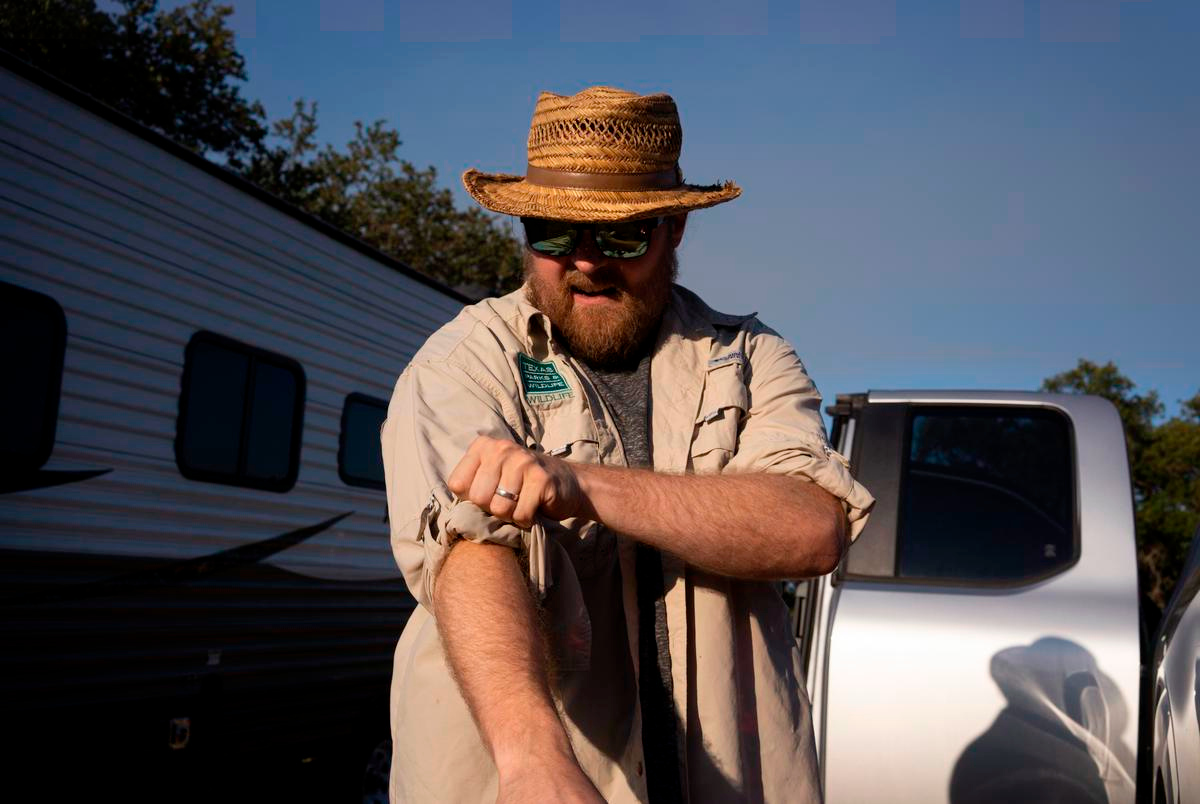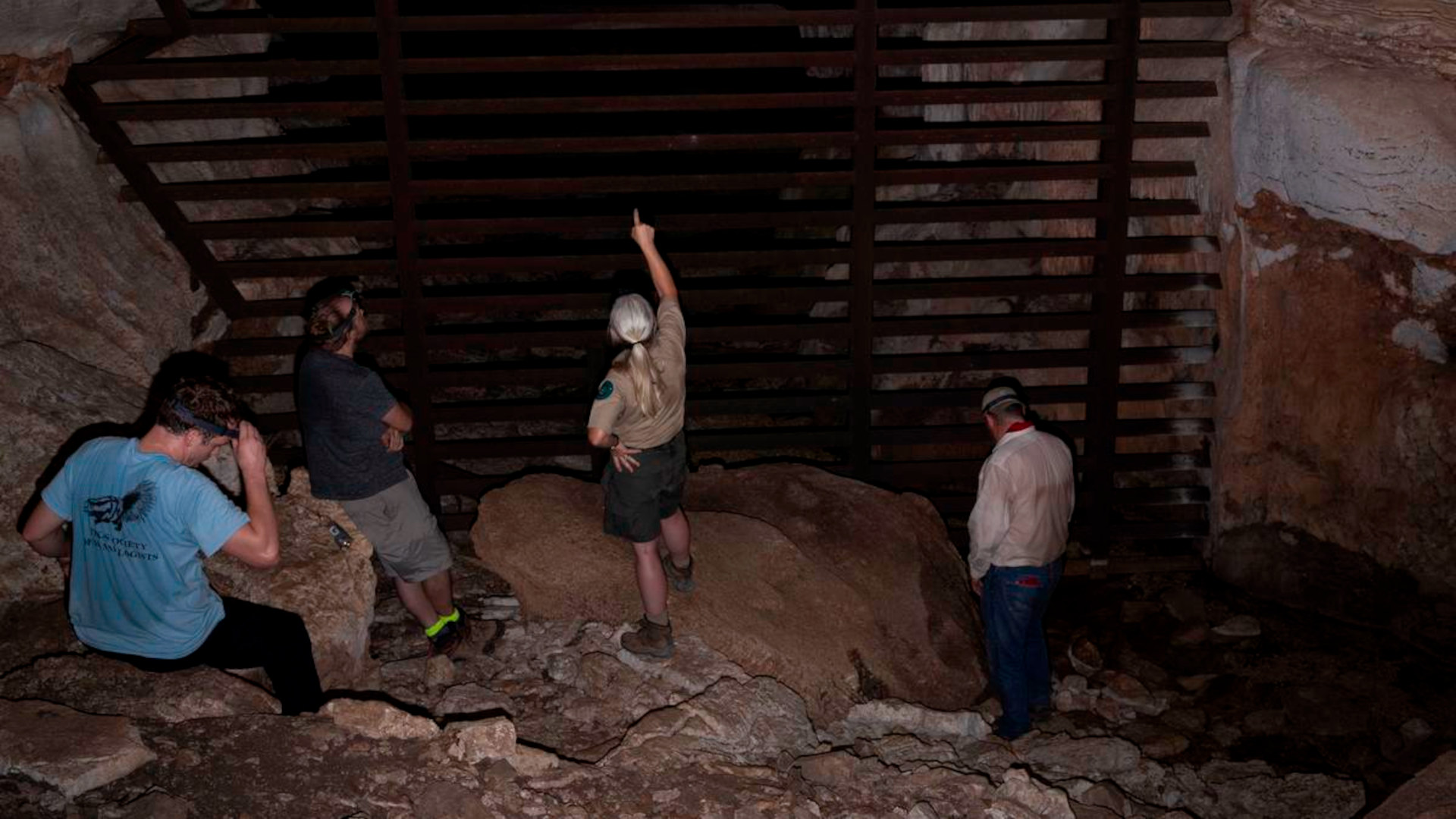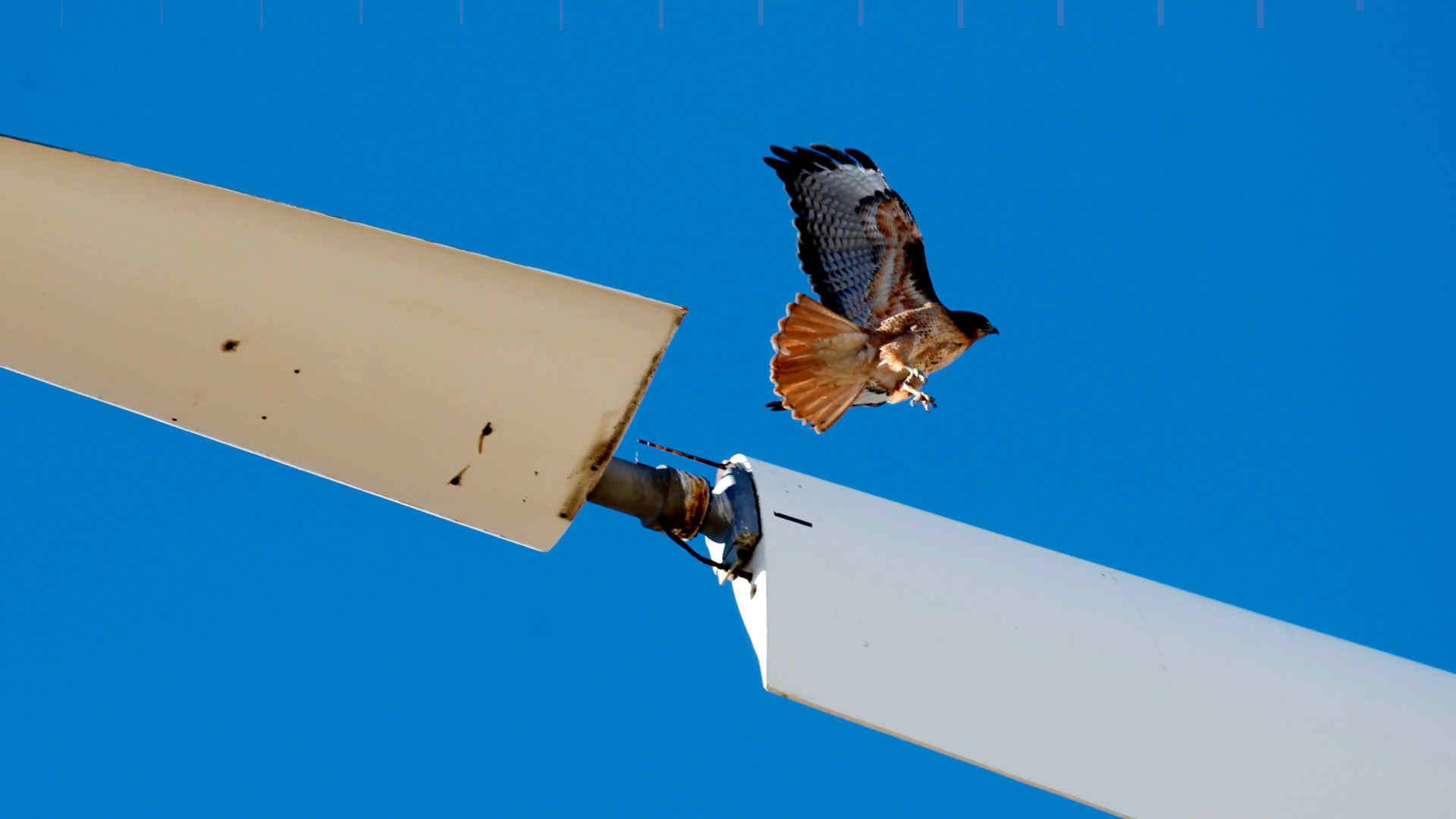Texas Bats Face a Pandemic of Their Own
There should have been 16,000 bats flying that night in mid-July. Instead, only about 500 remained at the cave in Central Texas next to the Colorado River. The rest succumbed to white-nose syndrome, a fungal disease that has ravaged bat populations across the country.
Gorman Cave, in Colorado Bend State Park, is one of the caves that Nate Fuller monitors. Fuller, the state bat biologist with the Texas Parks and Wildlife Department, said by the spring of 2020 — as Covid-19 became a global pandemic — bats in caves and across Central Texas were facing a pandemic of their own.
White-nose syndrome was first detected in Texas on Feb. 18, 2020, when Charles Pekins, a wildlife biologist at the U.S. Army base Fort Cavazos, formerly known as Fort Hood, found a dead bat covered with a white fungus. A few weeks later, a swab he sent to the National Wildlife Health Center confirmed that the disease had infiltrated the Lone Star State.
Across North America, 52 percent of bat species are at risk of severe population decline in the next 15 years, according to a report published in April by the North American Bat Conservation Alliance. Texas — home to the greatest diversity of bat species in the nation — has not been spared that decline.
About 70 miles south of where the first case was detected, Lee Mackenzie and Dianne Odegard of the Austin Bat Refuge were flooded with calls in February and March 2020 about dead or grounded cave myotis bats with the white fungus on their bodies and tears in their wings. Mackenzie said their wings looked like swiss cheese, a symptom of the disease in some bats.
They said people brought 23 cave myotis bats into their rehabilitation center during those two months; normally they would receive only a few in an entire year.
“We’d lose one after the next, day after day,” Mackenzie said. “We just couldn’t turn them around.”
Before long, Fuller with Texas Parks and Wildlife was receiving calls from 18 counties across the Hill Country with reports of dead bats.
“It was the worst point in my career,” said Fuller, who’s been working with bats for 16 years.
So far, white-nose syndrome has been detected only on cave myotis bats, but Fuller said it’s just a matter of time before it spreads to other species.
After white-nose syndrome was first confirmed in Texas, Fuller started surveying bat roosts in the state. Gradual population declines had been happening for a while, Fuller said, but accurate estimates — bats are notoriously hard to count — didn’t exist.
To get that data, Fuller’s team started taking videos of bats emerging from cave myotis roosts across the state and hand-counting the small, fast mammals one by one as they emerged.
That job largely falls to employees like Alex Buckel, who said going through one hour of footage can take an entire workday.
“If they’re really fast, I have to go frame by frame,” said Buckel, a seasonal bat technician this summer.
At two of the five caves the team surveyed, they recorded population declines of 58 percent and 70 percent between 2021 and 2023.
In others, the bats were simply gone. Fuller said they found no bats at Government Canyon in San Antonio, which had an estimated population of 18,000 in 1995.
And at Fort Cavazos, where that first bat with white-nose syndrome was detected, the colony with an estimated 30,000 cave myotis bats in 2015 has also disappeared, according to data collected by Pekins.
While migration and habitat loss could account for some of these drops, Fuller said he’s confident that white-nose syndrome is the primary cause.
Bats are important for insect control in the state and the Texas economy. Bats eat crop pests and help farmers reduce the amount of pesticides they need to use each year.
According to a 2011 study by leading bat researchers published in Science, bats save farmers $12 to $172 per acre in pest control costs nationally each year. In Texas alone, they estimated that bats saved $1.4 billion by eating crop pests.
Pecan farmer Troy Swift said he never planned to get into bats. But after reconnecting with his old acquaintance Merlin Tuttle — a leading international bat expert — there was no going back for Swift, now the proud owner of 18 bat boxes and counting.
“When I started growing pecans, my parents started calling me nutty, and now that I’ve gotten into bats, they call me batty,” said Swift, who owns 266 acres near Lockhart and planted his first tree in 2001.

He said he wants to attract more bats to his property so they can eat insects and help him reduce — or fully eliminate — his use of pesticides.
Swift installed the first bat boxes in his pecan grove in late fall of 2021, and by the following summer, the new tenants arrived.
Swift said he’s still in the experimental process — trying to figure out what types of bat boxes work best, which species of bats he’s attracting and which insects they’re eating. He wants to confirm that bats are eating pests like the pecan nut casebearer and hickory shuckworm, two moths that damage pecan trees by laying eggs that hatch into larvae and feed on immature pecans. He’s also testing for stink bugs, spittlebugs and flies — which don’t hurt pecan trees but are bad for the nearby cattle farmers.
As president of the Texas Pecan Board, Swift says if he can prove that the bats on his farm are eating the insects that damage pecan trees, he can try to convince other farmers to install bat boxes on their farms.
“It’s probably the only hope bats have,” said Swift, who is also vice president of the Texas Pecan Growers Association. “We have to prove what they do to agriculture.”
Swift, who runs a sawmill, said he’s started building bat boxes and selling them to other farmers.
Bats also draw in tourism to the state.
Austin’s Congress Avenue Bridge colony attracts 140,000 visitors each year, according to the Texas Parks and Wildlife Department. Other big bat-watching sites include San Antonio’s Bracken Cave, the world’s largest bat colony, and Fredericksburg’s Old Tunnel State Park — where 40 percent of the park’s visitors in 2022 came for the bats, according to Texas Parks and Wildlife.
It wasn’t always that way.
In the early 1980s, when Mexican free-tailed bats first moved into the crevices under the Congress Avenue Bridge, there was widespread fear and calls to exterminate the new residents. That panic is what drew Tuttle to Austin, where he started educational campaigns to calm fears about rabies and highlight the benefits of bats.
His work to protect the now-famous bats — considered the largest urban bat colony in the world — inspired the city in 2021 to declare his birthday, Aug. 26, Merlin Tuttle Day.
White-nose syndrome isn’t the only threat to bats in Texas.
Across the state, wind turbines kill about 200,000 bats each year — and as more are installed, more bats are being killed, according to Michael Whitby with Bat Conservation International.
There are no policies or regulatory mechanisms in place to reduce bat deaths from wind turbines. That would change if a species like the tricolored bat is added to the endangered species list, according to Sara Weaver, a senior environmental manager at Bowman Consulting.
The tricolored bat, found mainly in eastern and Central Texas, is under consideration to be listed as an endangered species by the U.S. Fish and Wildlife Service. If that happens, the agency would develop habitat conservation plans and work with wind facility operators and forest managers to find ways to avoid killing bats, the U.S. Fish and Wildlife Service said.

That would slow down construction of new wind turbines because companies would have to survey for bats in the area and also meet limits on how many bats can be inadvertently killed, Fuller said.
Weaver, who researches ways to balance wind energy and bats, said wind energy companies are looking for ways to prevent bat deaths. Scientists have found that pausing wind turbines during peak bat flying hours would have small impacts on energy production while saving a lot of bats’ lives.
This summer’s sweltering heat also hasn’t spared bats.
Swift said his bat boxes were home to up to 200 bats at one time, but when he checked on them in mid-July this year, he found them abandoned.
“Under these extreme conditions, they want shade,” said Swift, who just installed his first shaded bat box this month.
Bats also need water, and droughts like the one that’s gripped much of Central Texas for more than a year can dry up their water sources and limit their nightly hunting range.
The Austin Bat Refuge receives multiple calls each summer about bats that have suffered from dehydration and heat exhaustion from bat boxes placed in the sun. They said that to minimize risk, bat boxes should be placed so they’re not exposed to late afternoon sun. In a pinch, owners can put aluminum foil on the west side of boxes to reflect heat.
Just as climate change has led to an increase in extreme heat events in Texas, it’s also caused an increase in extreme cold that can harm bats. During the 2021 winter storm that hammered most of Texas with days of below-freezing temperatures, the Austin Bat Refuge took in 4,000 bats that had fallen from bridges across Travis County. Only 600 survived.
Last winter, Mackenzie with the Austin Bat Refuge said he spent his Christmas Eve collecting more than 1,000 frozen bats from under Round Rock’s Mays Street Bridge and other sites near Austin after a powerful cold front dropped temperatures below freezing across the state. Only 145 survived.
Over the next few years, Fuller, the Texas Parks and Wildlife bat expert, said he plans to continue visiting caves across Texas to count bat populations — and to see if bats return to some of the roosts where they recently disappeared. He wants to concentrate the agency’s efforts on researching white-nose syndrome and trying to understand which bats are most impacted by wind power expansion in order to minimize deaths.
“Bats are unique, awesome, wonderful parts of nature,” Fuller said. “Whether I can say that they’re worth money, or they’re worth tourism, or they warn you about things that are happening in the environment around you, they’re just so freaking cool.”
Disclosure: Texas Parks And Wildlife Department has been a financial supporter of The Texas Tribune, a nonprofit, nonpartisan news organization that is funded in part by donations from members, foundations and corporate sponsors. Financial supporters play no role in the Tribune’s journalism. Find a complete list of them here.
Susie Webb is a summer 2023 data visuals fellow for the Texas Tribune.
Joe Timmerman is an Austin-based summer 2023 photography fellow for the Texas Tribune.
This article originally appeared in The Texas Tribune, a member-supported, nonpartisan newsroom informing and engaging Texans on state politics and policy. Learn more at texastribune.org.











